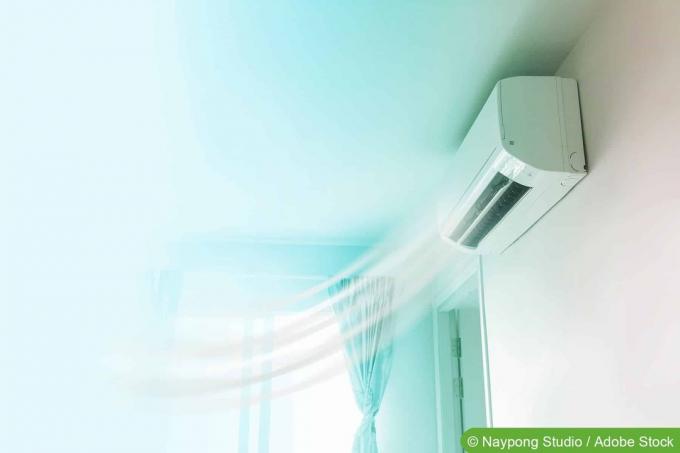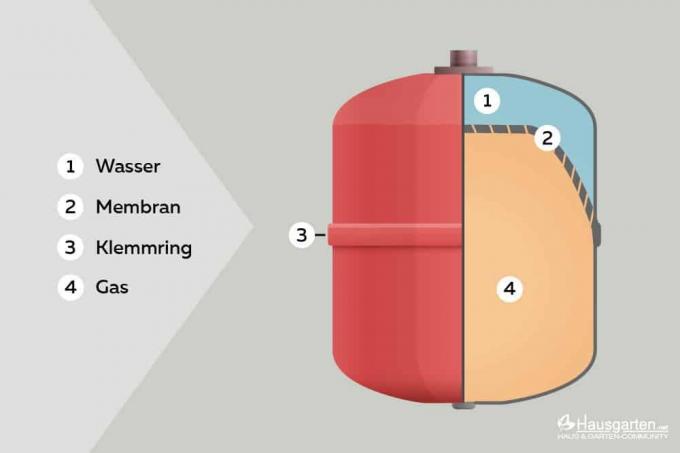

Table of contents
- Preparation
- Instructions
- Utensils needed
- step by step
- Prevent
If the heating no longer gets really warm, it is more than annoying and uncomfortable. In the long run, the lack of heat can also promote the formation of mold. Therefore, quick action is required. With our step-by-step instructions, it is quick and easy to bleed the oil line and thus restore full heating capacity.
Preparation
If it is unclear whether the heating line has weakened due to air in the line, the tank filling should first be checked. If this is empty or underfilled, difficulties may arise when sucking in the heating oil.

After that, the individual elements of the oil pump should be checked. If damage, leaks or loose lines are found here, specialist personnel must be called in. Attempting to carry out a repair yourself could result in further damage and risks.
Bleeding the line, on the other hand, is quick and easy if the proper steps are followed.
Instructions
Bleeding the oil line is also possible for laypeople without any problems, but requires the right procedure and the right utensils.
Utensils needed
- pipe wrench or wrench
- Cloth
- Bucket
- rubber gloves
- possibly a large diameter hose or flexible pipe
step by step
Once these aids and tools are ready, venting can begin. This will require the following steps:
- Turn off the heating. Otherwise, working on the heater could be dangerous.
- Find the vent valve. This is a so-called grease nipple, which is vaguely reminiscent of a screw.
- A bucket or shallow pan is placed under the bleed valve, as not only air but also oil will come out during the bleed. This can splash, so it may make sense to put an extra cover under the bucket or tub.
- The valve is easily opened with a wrench or small pipe wrench. More than one to a maximum of two turns should not be performed. Otherwise the valve may fall out.
- press the reset button. This starts a heating cycle. During this process, the air is pushed out of the line. However, it can also happen that heating oil drips out or even squirts out. Therefore, venting should only be performed with appropriate precautions and under supervision.
- If all the air has not been removed from the line during the bleed, another heating cycle must be started and the reset button pressed again. Due to a lock that is often set, this can only be activated once or twice. If this is the case, the button must be held down until the heating system starts up again. The lock can be bypassed by holding it longer.
- Only when the hissing from the line can no longer be heard can the vent valve be closed again. Care must be taken to ensure that it is tightened but not over-tightened. Failure to do so could damage the coil and require a replacement. On the one hand, this is very complex and, on the other hand, very expensive.
Tip:
If neither a bucket nor a tub or bowl fits under the valve, a flexible pipe or hose can be held over the valve. The air can still be removed, but this will prevent oil from being spread around.
Prevent
Air in the line can be prevented by maintaining the system appropriately. It should therefore always be ensured that the suction hose is kept close to the bottom of the tank and that the tank is filled so that no air can be sucked in.
Regular checks also ensure that the lines remain free of air bubbles and that an even heating result can be achieved. In addition, the regular checks keep the effort involved in venting very low, so that there are usually only a few air bubbles in the oil or in the line.
 Home editorial office
Home editorial office
Learn more about heat

Calculate cooling capacity BTU/hr of an air conditioner
If you want to buy an air conditioner, you should know the required performance. This is often given in BTU/h. You can find out what this is all about and how you can easily calculate the cooling capacity of an air conditioning system in our guide.

Combining heat pumps with photovoltaics: experiences
Does it make sense to combine a heat pump with a photovoltaic system? Home builders are right to ask this question, because if you already rely on a sustainable heating system, it can only be right to produce some of the electricity required for operation yourself, or?

Calculate heating expansion tank | Table & Formula
How large an expansion tank in heating systems has to be and what pressure it can generate and withstand depends on various factors. The following tips and the table below show what is important when selecting a pressure equalization tank or expansion tank.

Checking the heating expansion vessel: checklist
The heater's expansion tank serves an important purpose as it absorbs excess water from the system and equalizes the pressure when necessary. In order to prevent defects, it is therefore crucial to carry out regular checks.

Faulty expansion tank: 5 common problems
The expansion tank or the pressure expansion tank is crucial for even and efficient heating. If the expansion tank is defective, for example due to a tear in the membrane, an installer often has to be called in. However, in some cases, you can fix the problem yourself.

Radiator valve is stuck | 4 tips to solve the thermostat
If the heating does not want to warm up, there is a high probability that the radiator valve is stuck. Luckily, you don't need a specialist to make it work again. Here are a few tips on how to undo the part yourself.



